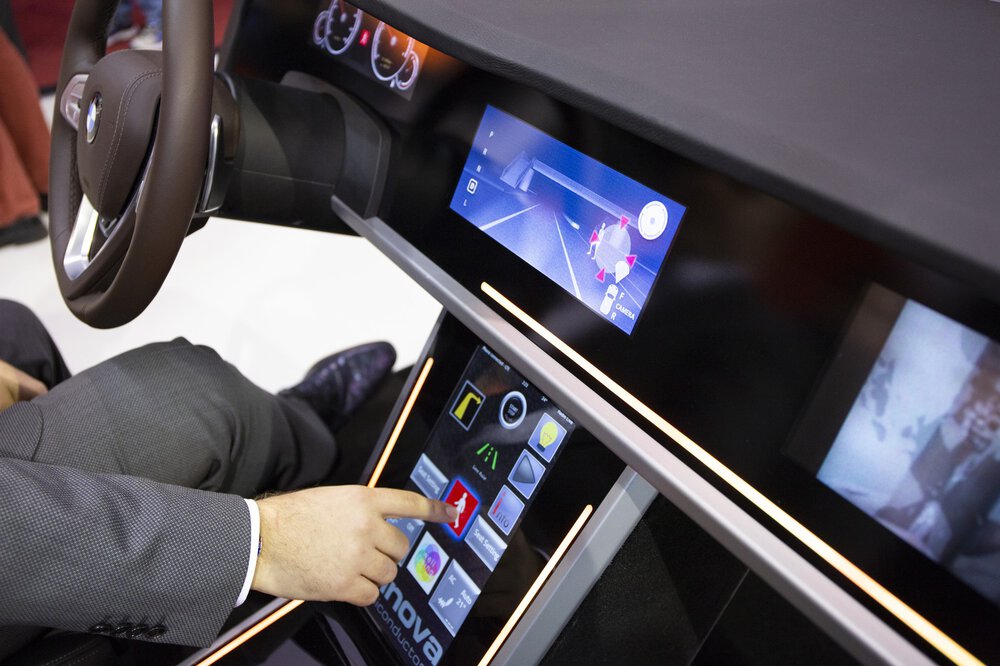The automotive industry: Leading the structural transformation
June 30, 2022
- New mobility demands more complex software solutions
- Transition from car manufacturer to mobility provider
- Electric mobility is one of the focal topics of the world’s leading trade fair
The megatrends of autonomous driving, connectivity, electrification and shared mobility demand a dramatic transformation of the automotive industry. At the same time, digitalization opens up significant potential for returns along the entire value chain. electronica 2022 will shed light on the most important trends and challenges in this rapidly changing environment, be it at the exhibition stands or in the supporting program in the forums and electronica Automotive Conference.
In many industrialized nations, the automotive industry is one of the most important sectors of the economy. At the highpoint in 2017, 97.3 million vehicles (statista) rolled off the production lines around the world. Due to the pandemic, this number dropped to significantly below 60 million by 2020. The fact that many automobile manufacturers are nevertheless bringing in record profits at the moment belies the actual situation. That’s because the pandemic, delivery bottlenecks, inflation, the war in Ukraine and tightening climate goals are hitting the automotive industry in the most disruptive period in its history. The catalysts for this disruption are the electrification of the powertrain, the rise of autonomous driving functions, alternative mobility concepts, and the automation and networking of manufacturing.
Electric mobility in focus
The switch from combustion engines to electric powertrains is of utmost importance in the public eye. The exhibitors at electronica 2022 play a decisive role here. For example, the likes of Bosch, Infineon, Renesas, Rohm, STMicroelectronics and Vishay are tackling key components for power electronics. Wide bandgap semiconductors made of silicon carbide (SiC) and gallium nitride (GaN) are setting new standards in this area in terms of switching frequency, efficiency, breakdown field strength, heat loss and size. For electric and hybrid vehicles, this means greater energy efficiency, higher range and shorter charging times. And development keeps pressing forward, even for silicon-based power electronics. Through the targeted integration of defects, scientists from the Fraunhofer IKTS are getting them to switch more quickly and accept higher currents.
A service in the form of mobility instead of hardware in the form of a car
Alongside the switch to electric mobility, significant changes in mobility behavior are changing the way senior management in the automotive industry thinks. Digital mobility platforms promise individual mobility without the need for a personal car and threaten to cut off manufacturers from direct access to customers. If car manufacturers don’t want to become suppliers to multinational mobility corporations, they have to transform into mobility providers themselves. In this context, autonomous driving plays a decisive role. That’s because, from level 4, cars become intelligent IoT devices. As a result, the share of semiconductors in vehicles is once again increasing significantly.
The world’s leading producers of car chips, Bosch, Infineon, NXP, Renesas, Samsung, STMicroelectronics and Texas Instruments, will be represented at electronica 2022. NXP, for example, will present its S32Z and S32E processors, an expansion of its S32 automotive platform for real-time processing of domain and zone controlling, security processing and vehicle electrification. Infineon’s multi-core SoCs from its Tc4x family will also cover a broad spectrum of automotive scenarios, from electric mobility, ADAS and connected cars to the implementation of AI. The latter is being used increasingly often in network monitoring (intrusion detection and prevention system), sensor fusion, battery management and predictive control.
These multi-core SoCs already address future zonal E/E vehicle architectures, like those being developed by Bosch and NXP. At a cross-domain level, the increasing complexity of software functions and the growing volume of data should be tackled with few high-performance vehicle computers and zone control units. With the appropriate cloud connectivity, all kinds of functions, such as vehicle-specific app stores, personalization, advanced driver assistance systems (ADAS) or comprehensive infotainment offerings, can be implemented and later booked via over-the-air (OTA) updates.
Conference of industry experts
These forward-looking technologies, as well as new strategies and business models will be the focal point of the electronica Automotive Conference, which takes place on November 14, 2022 to kick off electronica. “Value chains in the automotive industry are being transformed by new concepts for E/E vehicle architectures, driven by electric vehicles, and a separation of hardware and software by a few supercomputers rather than many individual control units,” explains Peter Gresch, CEO of OptE GP Consulting and Chairman of the electronica Automotive Conference Program Committee, and adds: “The electronica Automotive Conference will shed a lot of light on these massive changes and future trends in many specialist presentations, keynotes and discussions, and illustrate new business potential.”
Downloads
192162

- PR Manager


